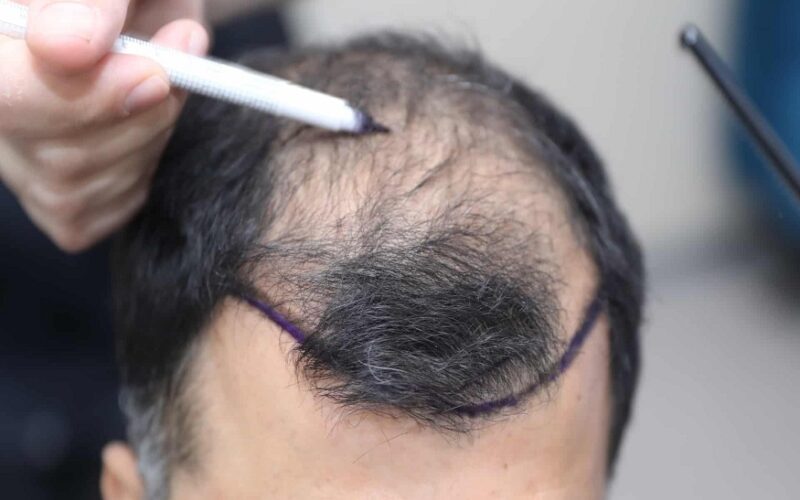Hair shedding is a common yet puzzling phenomenon. Despite the shock of seeing hair strands in the shower or hairbrush, it’s a normal part of the hair’s lifecycle. Let’s delve into this mystery and see why we shed hair.
The Lifecycle of a Hair Strand
Every strand of hair on your head has a lifecycle comprising three phases: the anagen phase, the catagen phase, and the telogen phase.
The Anagen Phase: The Growing Period
During this period, your hair strands are growing actively.
The Catagen Phase: The Transition Period
The catagen phase is a short transitional period that lasts about two to three weeks. During this time, the hair stops growing and detaches itself from the blood supply.
The Telogen Phase: The Resting Period
The telogen phase is a resting period when your hair is released and falls out. The follicle then remains inactive for about three months before the process is repeated.
Reasons for Hair Shedding
The Normal Hair Shedding
You can expect to shed 50 to 100 hair strands a day. But if you start to lose significantly more, it might be a sign of abnormal hair shedding.
Hormonal Imbalance: A Major Culprit
Hormonal changes, especially in women, can trigger hair shedding. Pregnancy, childbirth, and menopause are all times of significant hormonal shifts that can lead to hair loss.
Stress and Its Role in Hair Shedding
High-stress levels can cause hair to enter the telogen phase prematurely, leading to hair shedding. This is often temporary, and normal hair growth usually resumes once the stress is managed.
Effects of Dietary Choices on Hair Health
Lack of certain nutrients in your diet, such as protein, iron, and vitamins, can lead to hair shedding.
Age and Hair Loss
Hair Shedding and Age: The Inevitable Link
Hair growth tends to slow down as you age, and the hairs can become thinner and break more easily. This leads to an increase in hair shedding.
Menopause and Hair Loss: The Hidden Connection
During menopause, hormonal changes can cause the hair to thin and shed more rapidly than usual.
Thyroid Disorders: A Silent Hair Thief
Both hyperthyroidism and hypothyroidism can cause hair shedding. It’s due to the thyroid’s role in regulating your body’s metabolism, including hair growth.
Autoimmune Diseases and Hair Loss
Autoimmune diseases, such as alopecia areata, can cause hair loss.
The Influence of Skin Conditions on Hair Health
Certain skin conditions, like seborrheic dermatitis and psoriasis, can lead to hair shedding due to scalp inflammation.
Hair Treatments and Hair Shedding
The Price of Beauty: How Hair Treatments Cause Hair Loss
Modern beauty standards often encourage treatments that provide a temporary aesthetic enhancement but can damage the hair in the long run. Procedures such as perming, relaxing, straightening, bleaching, and coloring involve harsh chemicals that can weaken the hair, making it more susceptible to breakage and shedding.
Heat treatments are also a common cause of hair damage. Flat irons, curling irons, and high-heat blow dryers can dehydrate the hair, leaving it brittle and prone to shedding. These tools work by temporarily breaking the bonds in your hair and reforming them in a new shape. Repeated heat styling can lead to chronic damage and increased hair shedding.
Safe Hair Care Practices to Minimize Shedding
Adopt safer hair care practices to combat hair shedding due to damaging treatments. Firstly, limit chemical treatments and give your hair ample time to recover between each procedure. Deep conditioning treatments can replenish lost moisture and fortify the hair. Always follow the instructions on the product packaging to prevent over-processing.
As for heat styling, consider using heat-protectant products and keeping your styling tools in the lowest effective setting. It’s also important to ensure your hair is thoroughly dry before using a flat iron or curling iron to prevent ‘bubble hair,’ a phenomenon where water trapped in the hair shaft heats up and forms bubbles that weaken the hair.
Other safe hair practices include avoiding tight hairstyles, such as ponytails, buns, and braids, that pull on the hair and can cause traction alopecia over time. Additionally, use a wide-toothed comb on wet hair instead of a brush to avoid unnecessary breakage.
The Popularity of Hair Transplants in Turkey
Affordability Meets Quality
Hair transplant procedures in many countries, particularly the United States and Western Europe, can be expensive. In contrast, 5000 grafts hair transplant cost Turkey is more affordable. These lower costs are not a compromise on quality. On the contrary, Turkish hair transplant clinics often use the same state-of-the-art equipment and follow the same best practices as their counterparts in more expensive countries.
High Expertise and Experience
Turkey is home to many highly skilled and experienced hair transplant surgeons. The country has positioned itself as a global leader in hair transplantation, with Istanbul being recognized as the ‘capital’ of hair transplant tourism. As a result, the surgeons and clinics in Turkey are highly specialized and experienced in various hair transplant techniques, including FUE (Follicular Unit Extraction) and DHI (Direct Hair Implantation).
Comprehensive Packages
Many Turkish hair transplant clinics offer comprehensive all-inclusive packages. These include hair transplant cost Turkey, accommodation, airport transfers, and post-operation care. This level of service removes much of the stress involved in medical tourism, making the entire process smoother and more comfortable for international patients.
Minimal Waiting Times
In some countries, patients may have to wait several months before scheduling a hair transplant procedure. However, due to the high number of clinics and specialists, waiting times in Turkey are typically much shorter. This quick service attracts many people experiencing hair loss who wish to see results sooner.
By understanding why it happens and what factors can influence it, you can take steps to manage and reduce unnecessary hair loss.

